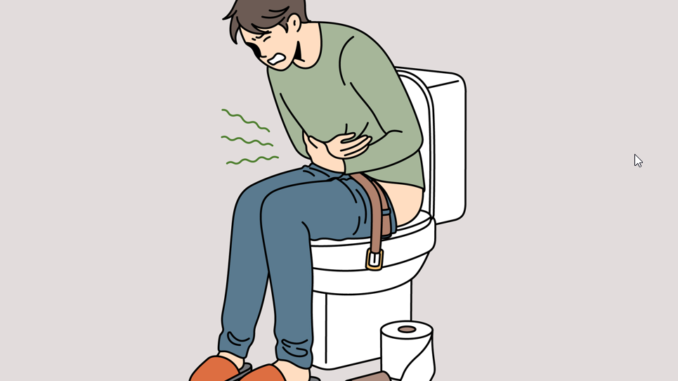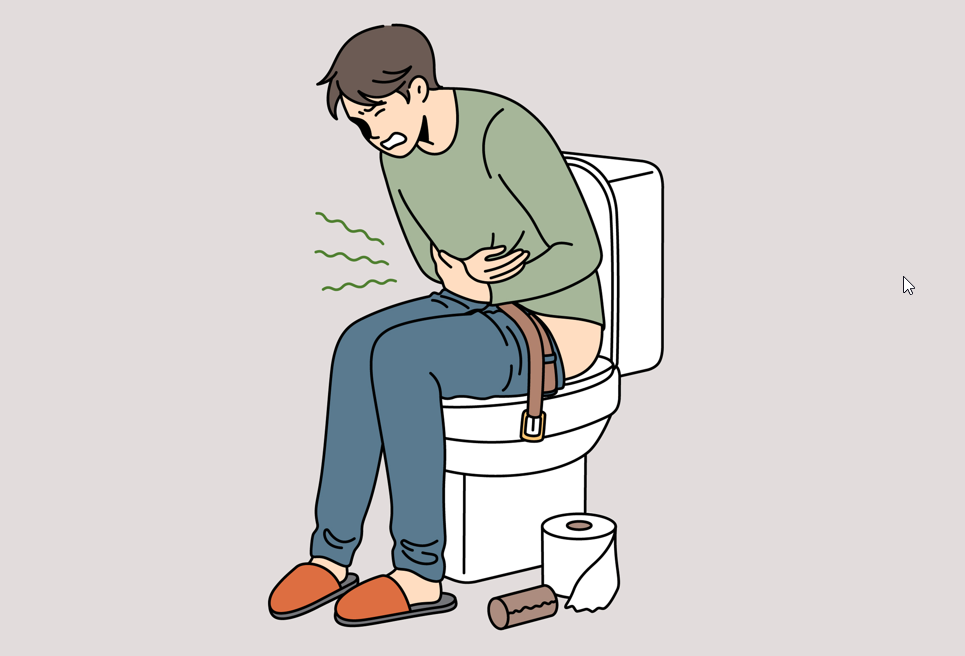
The way your stool appears indicates the status of your health. Poop may be green for many reasons some of which are of less concern, but sometimes, it can indicate something serious like a bacterial infection. A person may have greenish stool when they eat too much of high-chlorophyll plants for example, kale and spinach. Taking antibiotics may also contribute to changes in stool color.
Generally speaking, stool has a brown color but this can change to different hues like black, yellow, red, green, or anything in between. Most of the stool color changes don’t usually signal a medical condition, however, sometimes, they can actually point to an illness or problem within the gut. Having long term changes to stool color should be checked by a doctor. Poop can also turn green when you have diarrhea.

Table of Contents
Causes of Greenish Stool
There are many reasons people have greenish stool and in most cases, it is an indication of high amounts of leafy, green vegetables in an individual’s diet. The chlorophyll in plants contains green color that can present in stool when a person has eaten leafy, green vegetables.
Children tend to have green stool because of the artificial colored frosting they eat. Green powder supplements also have a lot of chlorophyll, which makes stool to be greenish. You don’t have to worry much if your stool is green because of taking greens, in fact greens are very healthy for the body.
Some foods however, have coloring that doesn’t become processed properly meaning it leaves color residues in a person’s stool. The food coloring that you take doesn’t necessarily have to have green color, even other colors like blue, purple, and black dyes can cause poop to be green. For instance, in 2015, Burger King, a fast food chain received attention after people who had bought Halloween Whopper noticed their stool was black. Many people who ate the Halloween Whopper said that their stool turned green.
The most common reason people have greenish stool is diet, however, there are other reasons that should make a person to be wary of the stool color.
Bile pigment
An individual’s stool may turn green when bile pigment is present. This can happen when food moves pretty fast through the person’s intestines. What happens is that there is no sufficient time given for the bile to break down, so it’s passed in its raw form through stool. Usually, diarrhea is associated with bile pigment in stool because the food hasn’t been digested properly and bile hasn’t been given time to break down sufficiently.
Antibiotics and other medications
When a person is in a course of antibiotics, it may induce changes in the types of bacteria within the gut. The bacteria in gut influence the normal hue of stool, so when there are changes in bacteria it could make stool to appear greenish. Usually, antibiotics destroy part of the normal bacterial flora in the gut.
Some medication and supplements cause breakdown of pigment that changes the stool color to green for example,indomethacic or Tivorbex, a nonsteroidal anti-inflammatory drug that is used to help reduce pain may cause changes in stool color to greenish. Iron supplements and medroxyprogesterone, a contraceptive medicine may also lead to the problem.
Medical procedures
If you have had a bone marrow transplant for example, and it was rejected by the body, it is likely to cause changes in stool color to green. Rejection of bone marrow transplant can cause graft versus host disease and this kind of disease presents with symptoms like diarrhea and green stool.
Bacteria and parasites
Having certain pathogens like parasites and bacteria in an individual’s body can cause stool color changes. Salmonella bacterium, norovirus, and Giardia, a water-based parasite are responsible for causing stool color changes. This occurs because the body tries to get rid of these pathogens by expelling stool quickly out of the body.
Gastrointestinal conditions
If a person has Crohn’s disease and other gastrointestinal conditions, they may pass bile quickly through the intestines causing the poop to look green. Crohn’s disease is a condition that causes inflammation in a person’s gut or digestive tract. Celiac disease may also contribute to greenish stool. It is a disease in which a person has intolerance to gluten.
A person with celiac disease has problems such as diarrhea, bloating, gas, and stomach pain. Having diarrhea or loose stool may be the reason the stool appears greenish in patients with celiac disease. There are other diseases and health conditions that are linked to passing greenish stool and they include:
- Irritable bowel syndrome
- Use of laxatives
- Ulcerative colitis
- Hemorrhoids or piles
- Cancers
- Tumors
- Gallbladder disease
- Presence of tears within the anus tissue lining
- Bleeding within the gut
- Diverticular disease
Green Diarrhea in Kids and Toddlers
If a kid is having green diarrhea, it is probably because of something they ate and it should not be a cause for concern. Artificially and naturally green-colored foods are able to cause greenish diarrhea in kids. Iron supplements as well as medications may also cause greenish diarrhea in kids. However, if a child has greenish diarrhea that comes along with symptoms like vomiting, fever, and abrupt changes in temperature, it can be a sign of illness. According to Mayo Clinic, having green diarrhea that goes on for three day or more should require examination by a doctor because it can signify an illness.
Also, read about green diarrhea in adults.
Is Green Stool a Sign of Cancer?
If you have green stool, you may be worried whether it could be a sign of cancer. Well, many stool color changes may be associated with cancer, however, green stool isn’t a common indicator of cancer. Stool color changes that are linked to cancer are tarry and black colors. The reason these color changes are associated with cancer is because of bleeding occurring somewhere within the upper gastrointestinal tract. If bleeding is in the lower GI section, then the color may be bright red, an indication of undigested blood.
You should see a doctor if you have diarrhea that is causing green stool, and has lasted for a couple of days. Long term diarrhea, if not treated can contribute to dehydration as well as poor nutritional status. Having chronic green stool that occurs along with other symptoms like upset stomach, blood in stool, and nausea should prompt you to get to a doctor’s office.
Depending on what is causing greenish stool, a doctor may order tests to evaluate your health and determine any kind of illness you could have. Otherwise, if medications and foods you eat are the culprit, a doctor may recommend changing the antibiotic course or you may just continue taking it so long as it doesn’t cause serious side effects. In case of leafy, green foods, there is nothing to worry about. Taking plenty of water can help with the GI system to flush out pathogens and toxins that may be contributing to diarrhea and the green stool.
You may want to limit foods that tend to worsen irritable bowel syndrome and other conditions likes Crohn’s disease or celiac disease. Greasy foods, carbonated drinks, dairy foods, gluten containing foods, and caffeine may be limited because they are triggers for greenish stool or diarrhea.
Authoritative Clinical References
Green feces – https://pubmed.ncbi.nlm.nih.gov/22232742/



Be the first to comment